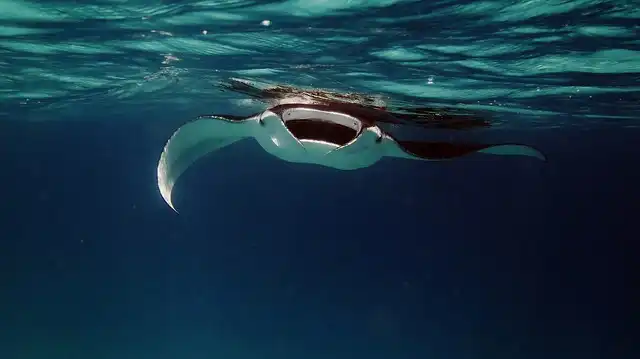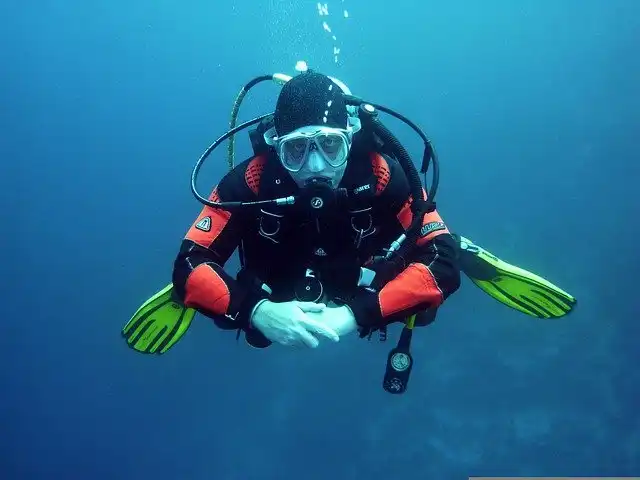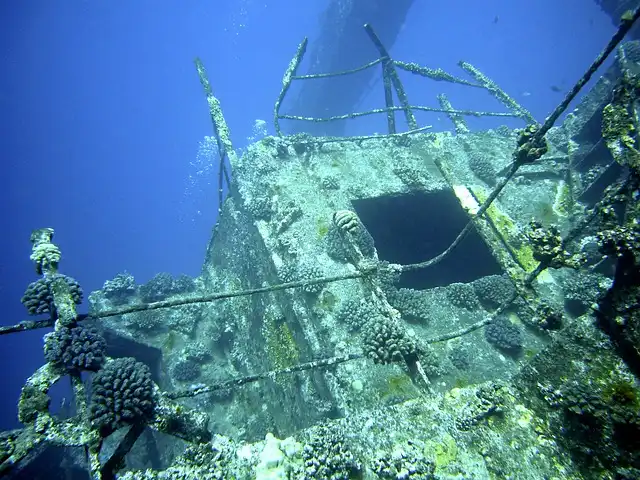Hanifaru Bay
Experience the world's most spectacular manta ray feeding aggregations in this UNESCO Biosphere Reserve - where hundreds of gentle giants gather seasonally for nature's greatest underwater spectacle
Seasonal Manta Ray Paradise
From May to November, unique oceanographic conditions create massive plankton blooms that attract up to 200+ manta rays in spectacular feeding aggregations
The World's Greatest Manta Spectacle
Hanifaru Bay is a small, horseshoe-shaped reef formation in Baa Atoll that hosts one of the planet's most extraordinary marine wildlife phenomena. This 1,300m x 600m bay transforms into a natural feeding arena during the southwest monsoon, attracting the largest known aggregations of reef manta rays.
During peak conditions, the bay becomes a swirling vortex of feeding manta rays performing spectacular behaviors including cyclone feeding, barrel rolling, and chain feeding. These feeding aggregations can include 50-200+ individual manta rays, creating an underwater spectacle unmatched anywhere else on Earth.
The site's global significance led to its designation as the core area of Baa Atoll UNESCO Biosphere Reserve in 2011, ensuring protection for this critical manta ray habitat and the unique ecosystem that supports these magnificent creatures.
Hanifaru Bay Quick Facts
- Location: Baa Atoll, Maldives
- Size: 1,300m x 600m
- UNESCO Status: Biosphere Reserve Core Area
- Peak Season: July-August
- Activity: Snorkeling only (diving prohibited)
- Max Group Size: 80 people per day
- Visit Duration: 45 minutes maximum
- Entry Fee: $20 USD per person
Spectacular Feeding Behaviors
Hanifaru Bay is famous for the extraordinary feeding behaviors displayed by manta rays during plankton blooms, creating nature's most mesmerizing underwater ballet.
Cyclone Feeding
Chain Feeding
Barrel Rolling
Surface Feeding
Types of Manta Encounters
Hanifaru Bay offers different types of manta ray experiences depending on seasonal conditions, lunar cycles, and plankton concentrations.

Mass Aggregation Events
During optimal conditions (typically July-August around new/full moons), Hanifaru Bay hosts massive feeding aggregations with spectacular cyclone formations and chain feeding behaviors.
Best Conditions: Southwest monsoon + lunar tides + plankton blooms

Small Group Feeding
Throughout the season, smaller groups of mantas visit Hanifaru Bay for feeding opportunities, providing more intimate encounters with individual behaviors and interactions.
Best Conditions: Moderate plankton concentrations during season

Whale Shark Encounters
Occasionally, juvenile whale sharks visit Hanifaru Bay during plankton blooms, creating extraordinary encounters with both manta rays and whale sharks in the same location.
Best Conditions: Dense plankton blooms during peak season

Cleaning Station Visits
Between feeding sessions, manta rays visit cleaning stations within the bay where cleaner fish remove parasites and dead skin, providing insight into their daily behaviors.
Best Conditions: Between feeding periods throughout the season
UNESCO Conservation & Protection
Hanifaru Bay's designation as a UNESCO Biosphere Reserve core area ensures the highest level of protection for this globally significant manta ray habitat.
Strict Regulations
Daily visitor limits, time restrictions, and behavior guidelines protect manta rays from disturbance while allowing sustainable tourism.
Scientific Research
Ongoing research programs monitor manta populations, feeding behaviors, and environmental conditions to inform conservation strategies.
Community Involvement
Local communities participate in conservation efforts through education programs, ranger training, and sustainable tourism initiatives.
Conservation Funding
Entry fees and tourism revenue directly support conservation management, research programs, and community development projects.
Seasonal Visiting Guide
Understanding Hanifaru Bay's seasonal patterns is crucial for planning your visit to maximize manta ray encounter opportunities.
Early Season
Conditions: Beginning of southwest monsoon
- Increasing plankton activity
- Small manta groups (5-15 individuals)
- Building up to peak conditions
- Good for first-time visitors
- Moderate success rate (60-70%)
Peak Season
Conditions: Optimal plankton blooms
- Massive aggregations (50-200+ mantas)
- Spectacular cyclone feeding
- Highest success rates (85-95%)
- Whale shark encounters possible
- Book well in advance
Late Season
Conditions: Continued good activity
- Consistent manta encounters
- Medium-sized aggregations
- Good weather conditions
- Less crowded than peak season
- Good success rate (70-80%)
Off Season
Conditions: Northeast monsoon
- Minimal plankton activity
- Very few manta sightings
- Bay often closed to tourism
- Focus on other Baa Atoll sites
- Low success rate (0-10%)
⚠️ Important Visitor Regulations
Hanifaru Bay is a strictly protected Marine Protected Area with specific rules to ensure manta ray conservation:
- Snorkeling Only: Scuba diving is completely prohibited to minimize disturbance
- Licensed Guides Required: All visits must be with authorized operators and guides
- Time Limits: Maximum 45 minutes in the water to reduce cumulative impact
- Daily Visitor Caps: Maximum 80 people per day during peak season
- No Touching Policy: Maintain 3m distance from manta rays, 4m from whale sharks
- Entry Fees: $20 USD per person supports conservation efforts
Responsible Snorkeling Guidelines
Following these guidelines ensures positive encounters while protecting this fragile ecosystem for future generations.
No Contact
Never touch, chase, or ride manta rays. Maintain minimum distances and allow natural behaviors.
No Flash Photography
Photography is welcome but without flash or strobes which can disturb feeding behaviors.
Calm Movement
Move slowly and calmly in the water. Avoid sudden movements or loud noises.
Reef-Safe Sunscreen
Use only mineral-based, reef-safe sunscreen or wear protective clothing.
Follow Guides
Always follow your guide's instructions and stay with your designated group.
Respect Time Limits
Honor the 45-minute maximum to minimize cumulative impact on manta rays.
How to Visit Hanifaru Bay
Access to Hanifaru Bay is strictly regulated through licensed operators. Choose from several options based on your budget and preferences:
Other Baa Atoll Marine Experiences
Combine your Hanifaru Bay visit with other exceptional marine experiences throughout the UNESCO Biosphere Reserve:

Dhonfanu Thila
Spectacular dive site with vibrant coral formations, reef sharks, and manta ray cleaning stations.
Activity: Diving | Depth: 8-30m

Nelivaru Haa
Protected lagoon with excellent snorkeling, juvenile marine life, and pristine coral gardens.
Activity: Snorkeling | Depth: 2-8m

Horubadhoo Island
Uninhabited island with excellent house reef snorkeling and pristine beach experiences.
Activity: Snorkeling & Beach | Access: Day trips
Frequently Asked Questions
Diving is prohibited to minimize disturbance to manta ray feeding behaviors. Scuba bubbles can disrupt feeding patterns, and the bay's shallow depth (6-15m) makes snorkeling ideal for observation while reducing impact. This regulation is strictly enforced to protect the UNESCO-designated ecosystem.
Hanifaru Bay is unique for its massive seasonal feeding aggregations (50-200+ mantas) during specific conditions, while sites like Manta Point offer year-round cleaning station encounters with smaller groups (3-8 mantas). Hanifaru's cyclone feeding behavior is found nowhere else in the world.
Book 2-3 months in advance for July-August peak season, especially around new and full moon periods when the largest aggregations occur. Daily visitor limits (80 people) mean popular dates sell out quickly, particularly from luxury resorts.
While success rates are 85-95% during peak season, manta encounters depend on natural conditions including plankton blooms, tidal patterns, and weather. Operators typically offer alternative activities or rescheduling if conditions are unfavorable.
Children 8+ with strong swimming skills can participate with proper supervision. The experience requires swimming in open water with potential currents. Life jackets are available, but basic swimming competency is essential for safety and enjoyment.
Witness Nature's Greatest Underwater Spectacle
Experience the magic of Hanifaru Bay's manta ray feeding aggregations in the UNESCO Biosphere Reserve of Baa Atoll. Book your once-in-a-lifetime adventure today.
Explore Baa Atoll